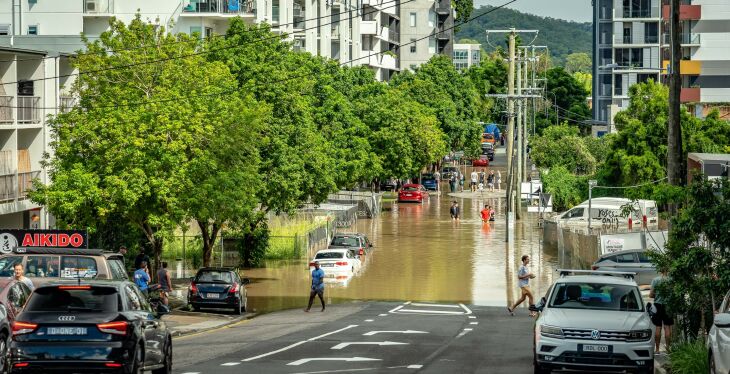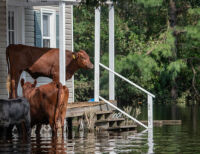
Planning authorities have warned property developers they need to take responsibility for building on land exposed to increasing climate-driven disasters.
Gold Coast City Council urban planner Pradesh Ramiah said authorities would no longer accept developers transferring risk and potentially increasing impacts on emergency services.
Speaking at the Future of Property conference at Bond University, Mr Ramiah said the status quo was no longer an option.
“We cannot continue to transfer risk down the line,” he told the gathering of property industry professionals.
“The amount of times we have to say to developers that (they) cannot just do what (they have) done in the past and make sure people get insurance, because insurance is not forthcoming anymore.
“More importantly, our State Emergency Services aren’t professionals, they are staffed by volunteers. We cannot continue to put their lives at risk because decisions are being made about putting people in high-risk natural hazard areas.”
He highlighted a recent example in which a high-rise aged care development proposed for a piece of land that flooded frequently wanted to mitigate risks by building a helipad to allow for evacuations in a disaster.
“Think about how many emergency helicopters are available on the Gold Coast in a disaster situation. There’s one. So they would be a bit busy,” he said.
“We’re seeing a lot more of this transferring down the risk just to get the approval and we’ve got to be a bit more conscious of that.”
Mr Ramiah said one of the major problem planners faced was understanding what type of future they were planning for.
“Are we planning to 1.5 degree warming, a 2 degree, are we looking at a five-cyclone season, a 10-cyclone season?
“At the moment without mitigating the amount of carbon that’s going into the atmosphere we are planning for the worst possible future. There’s no doubt about it, until we can actually get to the point where we can control the amount of carbon that’s entering the atmosphere, unfortunately we need to start to plan for the most catastrophic (possibilities).”
He reminded the crowd that risk assessment was moving away from the equation of an event happening every one in 100 years or every 200 years.
“We’re talking about probabilities now, it’s not about a time scale, it’s about the chance of a particular event of magnitude and intensity happening at any one point in time in a year,” he said.
“The weather events we’re seeing now are just going to get bigger. Things are changing really rapidly.”
The conference, presented by the Australian Property Institute, also heard from an economist about the impact of the RBA’s moves to tackle inflation, the latest developments in AI for the property industry and an overview of the Australian property market by CoreLogic’s Tim Lawless. It was also a rare opportunity to take part in a Q&A panel session with a developer and planner and a financier.















